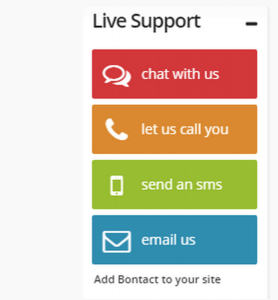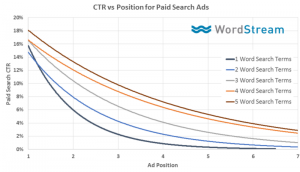
Retaining top suppliers is as important as retaining top talent
Since the dawn of the Great Recession in 2008, businesses around the globe have found themselves facing the chaos of new challenges — storms many had never weathered before. Although organizations are recovering, many changes occurred during the intervening years. Traditional approaches to recruiting and staffing have become obsolete in the current market. Younger employees are entering the labor force, and they want more career growth, engagement, connectivity and flexibility. The old notions of cubicles and corporate workspaces have not kept pace with an environment that favors remote work and alternative scheduling. A lot of hiring managers are still struggling to understand, motivate and engage the new breed of talent.Meanwhile, MSPs and their staffing partners are enjoying significant growth with the ever-increasing demand for contingent talent. Even in fixed-length, project- or assignment-based roles, keeping proven performers remains critical to maintaining that success. Retention has taken its rightful place as one of the most important topics in conversations about the future of talent — yet it spans more than just the workers themselves.
Staffing suppliers are the lifeblood of a thriving MSP program. Losing a valued staffing partner can lead to attrition on a much larger scale — the program is really losing the countless professionals they place. That can cause disruptions, morale issues, lost time and productivity, and the added costs associated with onboarding a new supplier. Here are some of best practices that elite MSPs use to keep their cherished business partners for the long haul.
Competitive compensation
Salaries and compensation packages are no longer the most powerful catalysts to employee retention, yet they matter. The same goes for staffing partners. They understand the highly competitive nature of an MSP program and the wealth of opportunities that abound as reward for stellar performance. Still, they also have to run their businesses efficiently. Today, the pricing sections that suppliers encounter in RFPs are sprawling affairs, delving deeply into the granular elements that comprise the final markups. Without really evaluating the built-in cost elements, your clients could be falling into the trap of choosing suppliers with impossibly thin margins. Pitfalls of such decisions include dreadfully low supplier engagement levels, unsustainable operating costs that could lead to supplier attrition, and huge disadvantages in attracting exceptional talent. Genuinely understanding the cost components that constitute bill rates will help MSPs and their clients choose the best suppliers for a program, adept at providing the highest caliber talent, instead of picking vendors with the lowest markups.
Most staffing supplier recruiters are compensated on the fills they achieve. Spending hours to toil away on difficult requisitions that require persuading candidates to work below market rates naturally leads to recruiters sourcing talent for other positions in the same amount of time. More fills, more compensation. Clients (or MSPs on their behalf) are compensating staffing suppliers for more than a candidate’s pay rate, they are paying for a great deal of work:
- The expenditures of time and effort from the staffing partner’s internal recruiters and style
- The type of workers being sought, particularly for niche positions
- The additional time to recruit specialized skills when a scarcity of qualified talent exists
- The geographic challenges associated with certain sites (e.g., locating highly experienced talent in rural markets with small, dispersed populations
- The depth of screening required for compliance with the client’s policies or regulations
All of these factors contribute to the variable costs incurred by suppliers. If a supplier’s remuneration is not commensurate with the requirements, the firm may not remain solvent in context of the program, which could lead to turnover and potential business disruptions.
Reward performance through additional opportunities
Just as employees seek room to grow and develop in their careers, staffing suppliers in MSP programs are also looking to advance and build on that relationship. A huge incentive for top performing suppliers is the potential to gain additional work with other clients the MSP serves. The most successful MSPs devote supplier management experts to their programs. These supplier management specialists don’t merely source, qualify and enroll suppliers, they construct partnerships and communities.
To build relationships, an MSP’s supplier management group develops suppliers in accordance with their core strengths. They share the pros and cons of the program and the benefits to be derived through participation, including reduced administrative complexity, simplified back office support and processes, reduced sales costs, and the opportunity to grow their business with other clients in the MSP’s base.
Create a culture predicated on collaboration and communication
Communication is essential to a successful contingent workforce solution. Staffing partners who are listened to, nurtured, understood and taken through a comprehensive onboarding process at the first point-of-contact will engage quickly. Top MSPs mitigate supplier concerns upfront, prior to engagement, through forums, webinars, conference calls or one-on-one conversations. Even in no-touch programs, which represent the majority of MSP engagements, communication begins and ends with the MSP’s account team.
- Design forums as communications events with the purpose of conveying clear messages about business strategies, procurement needs, future directions, continuous improvement recommendation, innovations, goal attainment and more.
- Clearly define the client’s layered strategies — program drivers, visions, future missions and forecasts.
- As the MSP, impart your perspectives on the partnerships — how all teams can unite and work toward common ends.
- Review lessons learned, define ongoing prerequisites for success, discuss trends and share best practices.
- Develop a mutually agreed upon roadmap for strategic management processes as the program evolves
Staffing partners who feel a strong sense of unity with MSPs will undertake the work with a greater
understanding of expectations, solid knowledge of the objectives to be achieved and insight to the
client’s culture and business environment. They demonstrate superior performance metrics and
adherence to SLAs. When suppliers explicitly comprehend what is expected of them, have the tools they
need to do their jobs, are solid fits for their roles and feel supported by the MSP, they will commit to the
program’s mission. On the other hand, if these needs are not satisfied, even the most impassioned and
compelling value proposition may not kindle a strong sense of engagement.
Be an advocate, not a cop
In reactive programs, a handful of MSPs might feel pressured to blame suppliers for after-the-fact issues. It’s imperative that MSPs monitor rules and enforce compliance with policies. They are the interlocutors, the mediators and the messengers. And while some amount of policing is necessary, they don’t need to respond as police — showing up to diffuse a situation without really knowing the causes.
World-class MSPs go the extra mile to support their suppliers, building upon their capabilities, enhancing their performance, bolstering their resilience and helping them innovate new approaches or solutions. MSPs with the highest engagement levels use supplier recognition, feedback and development as powerful motivators. They leverage well-earned recognition as an incentivizing way to hone and expand a supplier’s capabilities, elevating program value to new heights.
The status quo is the enemy of ongoing improvement and creative innovation. Like an efficient Six Sigma program, MSPs should constantly seek out defects in the process, crafting preventative and proactive initiatives to redress potential issues before they blossom into real-world obstacles. Everyone’s familiar with the old adage “if it ain’t broke, don’t fix it.” Yet, realistically, if you’re not actively looking, you’ll never know something’s about to break until it’s too late. That’s where problems can arise. Instead, by actively monitoring program metrics, identifying potential obstacles and keeping staffing partners in the loop, MSPs can prevent challenges and maximize supplier performance.
Be accountable
Great MSPs hold all members of the team accountable for their agreed upon deliverables. And that includes their own program managers and personnel. The program can only thrive as a united front, with all team members in alignment. Despite good intentions, MSPs that attempt to resolve issues or fix problems alone — or try to displace accountability for issues on others — can have these efforts backfire in ways that erode the foundations of the overall program. A proactive and forward-looking approach ensures that fires can be spotted and smothered before they erupt into infernos. By making changes swiftly and openly, MSPs can continue to energize the supplier base, remain in frank and close communication with staffing partners, and provide support. Suppliers will recognize these efforts and conduct business in the right way to meet all program needs.
Strive to create relationships that foster partners, not vendors
Staffing suppliers play a vital role in the ultimate success of a contingent labor solution. With the talented resources they’ve vetted, selected and nurtured, they are instrumental to a thriving MSP/VMS program. Those MSPs dedicated to building mutually rewarding partnerships with their staffing curators inevitably find themselves basking in praise for superior levels of customer satisfaction, cost savings, quality and service.
Business & Finance Articles on Business 2 Community
(128)
Report Post





